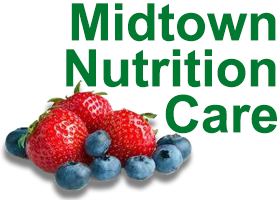NEW “HEALTHY” FOOD LABEL
Labels with nutrition information, such as calories, sodium and fat content, have been listed on most foods since food labeling was introduced in 1973. Food labels are meant to provide consumers a better understanding of what nutrients are in the foods we are eating.
HEALTH CLAIMS ON LABELS
Since the creation of food labels, the Food and Drug Administration (FDA) has allowed nutrition labels to make specific claims about the nutritional benefits of foods by using phrases like “good source of fiber” or “excellent source of calcium”. A common labeling claim is the use of the word “healthy” on foods that meet certain criteria. The “healthy” label is intended to guide consumers towards better food choices. Since 1994, products can be labeled as healthy if they meet specific limits for total fat, saturated fat, cholesterol and sodium. These foods must also provide at least 10% of the Daily Value (DV) of vitamin A, vitamin C, calcium, iron, protein and fiber.
PROPOSED CHANGE TO THE “HEALTHY” LABEL
On September 28, 2022, the FDA proposed a change to the “healthy” definition. If their proposal is accepted, a product may be labeled “healthy” if it contains food from a beneficial food group. In addition, the product must not have excessive amounts of added sugars, saturated fat or sodium. Once this new definition is accepted, labels will also be able to display a new “healthy” logo so that consumers may quickly and easily identify these healthy products.
NEW FOODS IN THIS CATEGORY
The proposed change in the definition of “healthy” will eliminate some foods that are currently defined as healthy under the 1994 definition, such as white bread, sweetened yogurt and sweetened cereals. Foods that have not been able to use the “healthy” label, such as nuts, avocados, salmon, certain oils, and even water, will now be eligible to use the “healthy” label.
CRITERIA FOR FOOD GROUPS
Food groups such as protein, grains, fats, fruits and vegetables will need to meet specific nutritional criteria in order to qualify for the new “healthy” label. For example, seafood can qualify for the label if it has no added sugar, 10% or less of the DV for sodium, and 10% or less of the DV for saturated fat.
CALORIES NOT INCLUDED IN THE DEFINITION
The “healthy” label does not consider the calories contained in the product, so the “healthy” label does not mean that the food is low in calories. Therefore, if you are moderating your calorie intake, foods with the new “healthy” label should be consumed in moderation.
